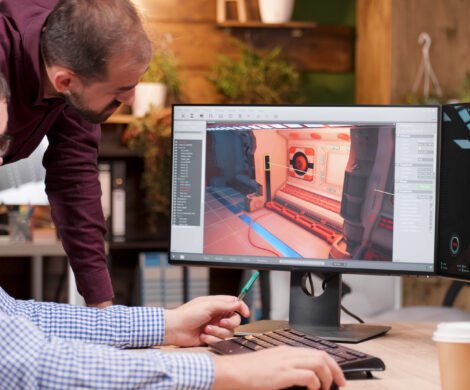The Wonderful World Of Graphic Design: A Comprehensive Guide.

Graphic design is the art of communication, stylizing, and problem-solving through the use of type, space, and image. The field is also known as visual communication or communication design.
Graphic designers work with clients, usually companies or organizations, to create visual concepts that represent their messages. They use a variety of methods to create and combine words, symbols, and images to form a visual representation of ideas and messages.
A career in graphic design can be very rewarding, both creatively and financially. If you are thinking of pursuing a career in graphic design, then this guide is for you. Keep reading to learn everything you need to know about the wonderful world of graphic design!
What is Graphic Design?
Graphic design is the process of creating visuals using a combination of text and images. graphic designers use their creativity and technical skills to communicate ideas and messages visually. This can be done for a variety of purposes, such as advertisements, product packaging, websites, and more.
Graphic design is a complex field that encompasses many different specialties. Some common types of graphic design include branding, logo design, typography, editorial design, and packaging design. Graphic designers often specialize in one or more of these areas.
If you’re interested in a career in graphic design, you’ll need to have a strong portfolio that showcases your skills. You’ll also need to be familiar with the various software programs used in graphic design, such as Adobe Photoshop and Illustrator. A bachelor’s degree in graphic design is also helpful.
The History of Graphic Design.
Graphic design is a field that has been constantly evolving since its inception. From the early days of woodblock printing to the modern age of digital design, the history of graphic design is a fascinating story.
The field of graphic design can be traced back to the early days of human civilization. Some of the earliest known examples of graphic design were found in caves in southern France, where primitive cave paintings were found. These early examples of graphic design were created using rudimentary tools and techniques.
As civilization began to progress, so did the field of graphic design. The invention of the printing press in the 15th century ushered in a new era of graphic design, as printmaking became a popular way to disseminate information. This was followed by the rise of advertising in the 19th century, which made graphic design an essential tool for businesses.
The Elements of Graphic Design.
Graphic design is the art of creating visual content that communicates messages or tells stories. It relies on the right combination of typography, colour, imagery, and layout to create a cohesive and effective design.
There are a few key elements that all good graphic design must have. These include balance, hierarchy, alignment, and contrast. By understanding and utilizing these elements, you can create stunning visual designs that effectively communicate your message.
The Principles of Graphic Design.
Graphic design is the process of creating visual content to communicate messages. The field of graphic design is divided into several subcategories, including web design, logo design, branding, and advertising.
Graphic designers use a variety of tools to create their designs, including Adobe Photoshop, Illustrator, and InDesign. They also use layout, color, and typography to create visually appealing and cohesive designs.
The principles of design are the foundational concepts that graphic designers use to create their work. These principles include balance, contrast, hierarchy, unity, and rhythm. By understanding and applying these principles, graphic designers can create designs that are both aesthetically pleasing and effective.
The Applications of Graphic Design.
Graphic design is the process of visual communication and problem-solving through the use of typography, photography, and illustration. The field is considered a subset of visual communication and communication design, but sometimes the term “graphic design” is used synonymously. Graphic designers create and combine symbols, images, and text to form visual representations of ideas and messages. They use typography, visual arts, and page layout techniques to create visual compositions. Common uses of graphic design include identity (logos and branding), publications (books, newspapers, and magazines), advertisements, product packaging, and signage.
The Career of Graphic Design.
Graphic design is a field that covers a wide range of activities, from branding and advertising to web design and packaging. A career in graphic design can be both creative and rewarding, offering a unique opportunity to use your skills to shape the world around us.
There are many different paths you can take in graphic design, from working as a freelancer to joining a design studio or agency. Whatever route you decide to take, you’ll need to be armed with the right skills and knowledge to succeed. In this article, we’ll explore the world of graphic design and help you get started on your journey to a career in this exciting field.
The Future of Graphic Design.
Graphic design is an ever-evolving field. With new technologies and tools being developed all the time, the future of graphic design is always changing. So what does the future hold for graphic designers?
There are a few trends that seem to be emerging in the world of graphic design. First, there is a move towards more minimalistic and clean designs. This is likely due to the increasing popularity of flat design and material design. Second, there is a trend towards more bold and experimental designs. This is likely due to the increasing popularity of digital art and the rise of new design movements like abstract expressionism.
These are just a few of the trends that we see emerging in the world of graphic design. As the field continues to evolve, we can expect to see even more new and exciting trends emerge.





